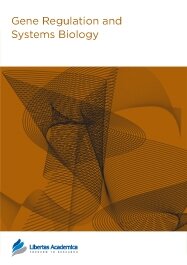

Publication Date: 06 Jul 2009
Type: Original Research
Journal: Gene Regulation and Systems Biology

Understanding a mechanism of bone remodeling is a challenging task for both life scientists and model builders, since this highly interactive and nonlinear process can seldom be grasped by simple intuition. A set of ordinary differential equations (ODEs) have been built for simulating bone formation as well as bone resorption. Although solving ODEs numerically can provide useful predictions for dynamical behaviors in a continuous time frame, an actual bone remodeling process in living tissues is driven by discrete events of molecular and cellular interactions. Thus, an event-driven tool such as Petri nets (PNs), which may dynamically and graphically mimic individual molecular collisions or cellular interactions, seems to augment the existing ODE-based systems analysis. Here, we applied PNs to expand the ODE-based approach and examined discrete, dynamical behaviors of key regulatory molecules and bone cells. PNs have been used in many engineering areas, but their application to biological systems needs to be explored. Our PN model was based on 8 ODEs that described an osteoprotegerin linked molecular pathway consisting of 4 types of bone cells. The models allowed us to conduct both qualitative and quantitative evaluations and evaluate homeostatic equilibrium states. The results support that application of PN models assists understanding of an event-driven bone remodeling mechanism using PN-specific procedures such as places, transitions, and firings.
PDF (733.85 KB PDF FORMAT)
RIS citation (ENDNOTE, REFERENCE MANAGER, PROCITE, REFWORKS)
BibTex citation (BIBDESK, LATEX)
XML
PMC HTML
Publishing in Gene Regulation and Systems Biology was a very positive experience. I was impressed by the fast and uncomplicated submission process as well as the clear and professional peer review process which helped to improve the manuscript. The Libertas Academica team was very patient and helpful. I would definitely recommend the journal to other colleagues in the field!

All authors are surveyed after their articles are published. Authors are asked to rate their experience in a variety of areas, and their responses help us to monitor our performance. Presented here are their responses in some key areas. No 'poor' or 'very poor' responses were received; these are represented in the 'other' category.See Our Results
Copyright © 2013 Libertas Academica Ltd (except open access articles and accompanying metadata and supplementary files.)
FacebookGoogle+Twitter
PinterestTumblrYouTube